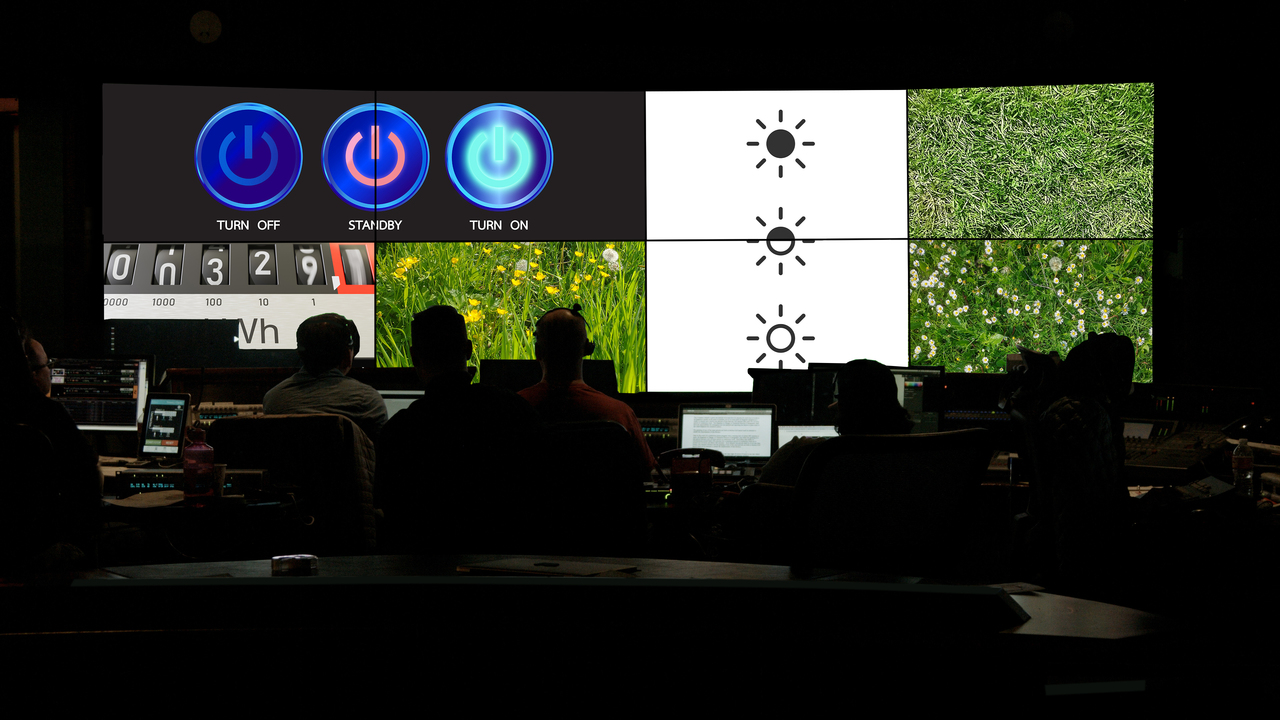In the previous blog we focused on the energy consumption of the different video wall technologies. In this blog, we will explore three ways to minimize the energy consumption of your chosen video wall to contribute to your control room’s sustainability.
#1. Implement modern display technologies
Replacing older large video walls (of, say, before 2010) with newer models is one of the most effective ways to impact your current wall’s power consumption, and hence your energy bill.
As an example, modern rear-projection cubes use RGB Laser or LED as light sources, which is significantly more energy-efficient than older lamp sources. These illumination components also last longer, reducing the frequency of replacements – this means less waste, minimizing environmental impact.
If you opt to go for a new direct-view LED wall, it’s worth investigating your options, as there is a substantial difference in eco-performance between various models on the market. For example, Barco TruePix LED video walls are designed in line with Barco’s ecoscoring methodology. This not only means that some specific measures were taken to minimize power consumption, but also that packaging is optimized, the full lifecycle sustainability performance was considered, and no hazardous materials were used. This way, you get the very best out of (as mentioned yesterday), the most power consuming display technology.
#2. Adjust display brightness
It doesn’t make sense to let the display play at full capacity when this is not needed. This not only consumes a lot more energy than needed, but is also disadvantageous for operator ergonomics. Looking at a bright display for a longer period causes eye strain, so the overall efficiency of the control room staff will be higher when the video wall is not too bright. At night, for example, it’s always a clever idea to bring the brightness of the lights down. Not only that of the video wall, but also the artificial ambient lights.
A point to consider here, is that many video walls were initially designed to operate at high brightness (700 NIT for example). They can be dimmed to e.g. 250 NIT, but this tends to negatively affect the image quality. To be able to operate under any brightness condition, Barco’s TruePix uses the Infinipix Gen 2 image process. This way, you can go for lower brightness, yet a perfect image. Be it still, be it video.
#3. Turn off displays when not in use
A third way to minimize the energy consumption of your video wall is to simply … turn off displays when they're not in use.
This can be done manually by operators when they're not needed or through an automated scheduling system that turns off the displays during periods of low activity or when the control room is unoccupied.
Although this is an amazingly simple measure, there are a lot of organizations that choose to keep their video walls operational 24/7. Most often, this is because it takes a long time for the system to start up and become ready for use. This is fixed with an ‘active standby’ mode, which makes sure the display comes online in no time.
But again, make sure to also check the power consumption in this standby mode. Sometimes, this is only a fraction of the fully functioning wall, but other brands still consume up to 70% of the fully lit video wall! With its EcoPower standby mode, Barco TruePix consumes 95% less power compared to full black mode.
In short
In conclusion, there are quite a few measures you can take to reduce the energy bill your video wall. Ideally, this should be part of the larger sustainability performance of the wall. So carefully check the product specifications of a video wall before purchasing.
Energy consumption, for example, varies a lot and the additional cost for a more efficient cube or LED panel will pay for itself within a few years.
Next to that, there is also the packaging, use of materials and full lifecycle management to consider. To make it easy for our customers, Barco has created the ecoscoring methodology, identifying the products that score particularly well when it comes to sustainability. So, keep an eye out for the eco label!
You can read all about our ecoscoring methodology on our website! Or stay tuned for tomorrow’s blog which will give you all the ins and outs.








Please sign in
If you are a registered user on AVIXA Xchange, please sign in
Be great to see full EPDs for the products too. This is an essential part of AV (and tech more broadly) maturing in the carbon-management environment. Recommend checking out Building Transparency EC3, EPD Australasia and other such organisations for context. Also happy to chat direct if you'd like to explore this further.